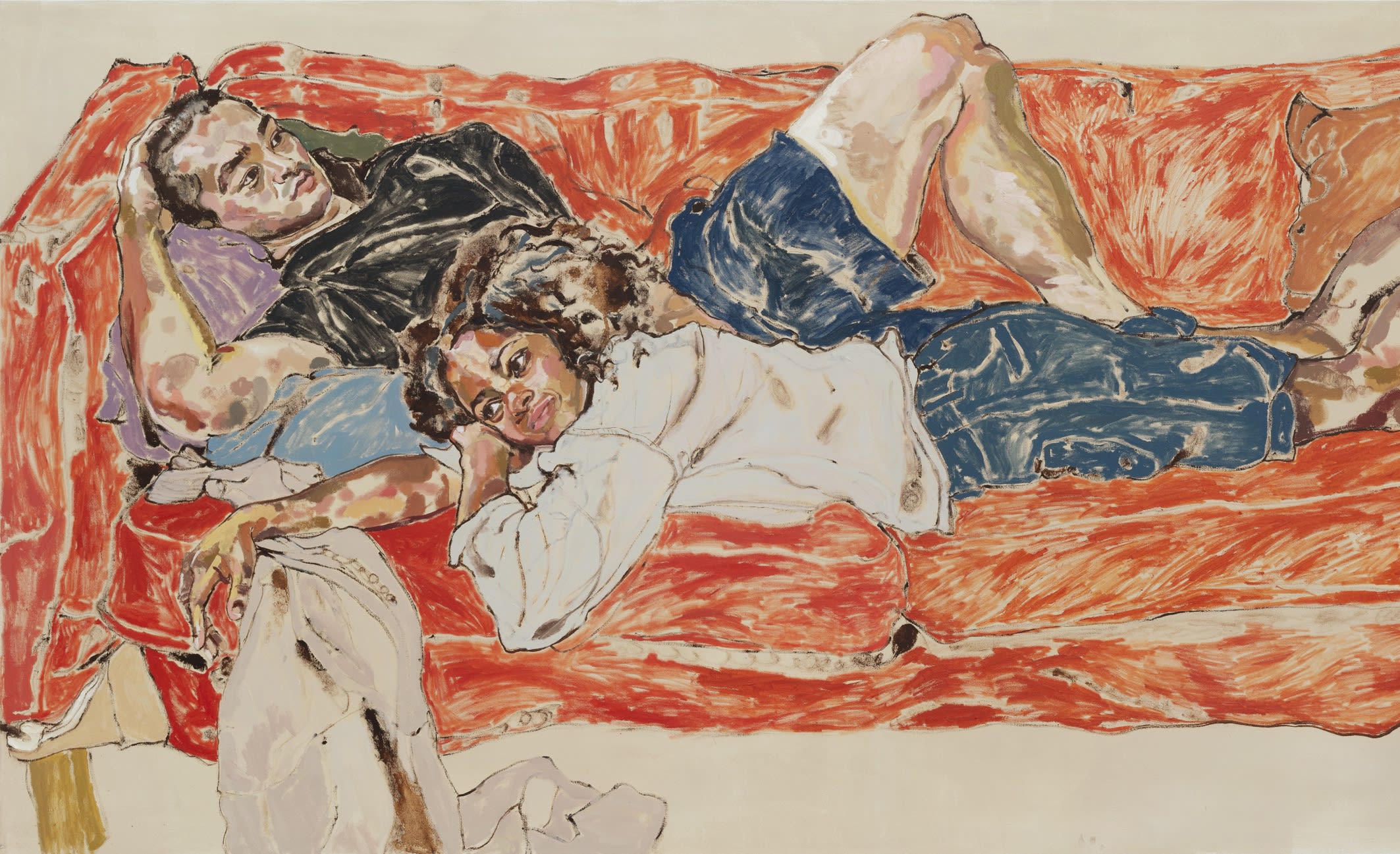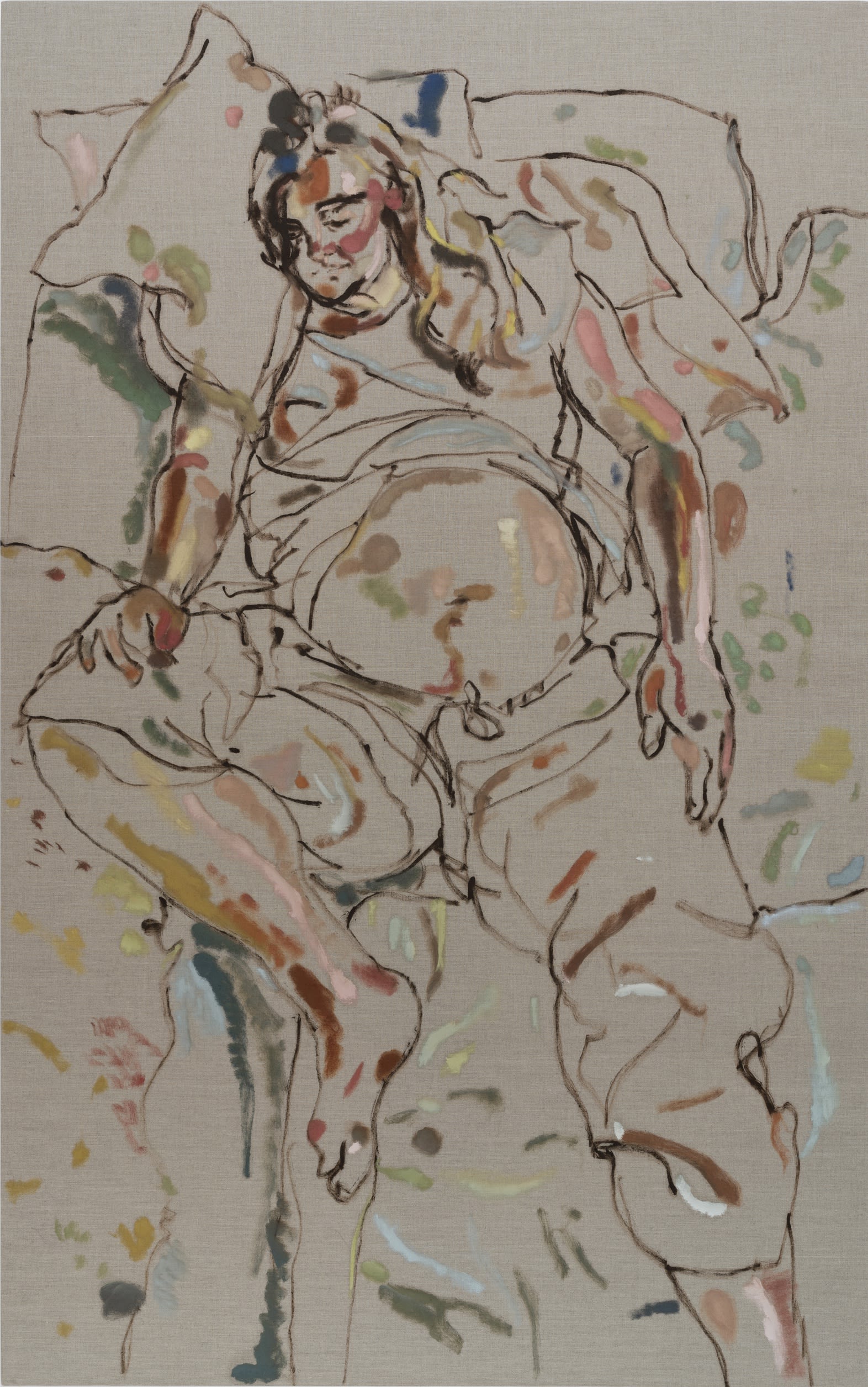Morag Caister's solo show 'Peacetime' is being exhibited at RHODES contemporary from the 13th of September to the 5th of October.
Egon Schiele was an Austrian painter, mentored by Gustav Klimt, and a member of the Austrian expressionists. He is remembered as a relatively tortured figure who struggled with ideas of gender, and this struggle manifested in hundreds of detailed, nude, female portraits. Morag Caister is a contemporary British artist, acclaimed for her intimate portraits. She won the Sky Portrait Artist of the Year Award, and her portrait of Sir Lenny Henry is currently hung in the National Portrait Gallery. While she may not share Schiele’s obsession with the naked female form, her expressive brushstrokes, often-muted colour palette, and intentionally exposed canvas are reminiscent of his works.
The first comparison is between Schiele’s ‘Seated Woman with Legs Drawn Up’ (1917) and Caister’s ‘Mermaid Dreams (2)’. In Schiele’s portrait of his sister-in-law, Adele Harms, he’s used patchy brushwork and unsteady lines to create a very vulnerable character. We feel like she is incomplete, literally and emotionally, due to her open pose and pointed stare. ‘Mermaid Dreams (2)’ uses the same methods of shaky lines and expressionist brushstrokes to portray texture and comfort. The model, all Caister’s works are live sittings, may be nude but little attention has been paid to her naked body. In a similar fashion to Adele’s top in Schiele’s portrait, colour and detail dominate in the aqua dressing gown worn by Caister’s model. While in Schiele’s piece the background is left blank, the brushstroke style in Adele’s clothes is parallel to the Caister’s background. The intentionally visible canvas, either in the background or on the body, combined with the simplistic faces on both women creates a wistful atmosphere, a personal moment we have intruded upon. This ability to create an atmosphere of personal intimacy is one of the reasons Morag Caister is such a beloved portrait artist.

Framed

While Schiele is often remembered for his graphic renditions of nude women – ranging from his sister Gertrude to the young prostitutes he found in Neulengbach – we cannot ignore the comfort many of his models radiate. In ‘Reclining Female Nude’ (1917), the model is topless but for a pair of heeled boots and bloomers. However, despite her apparent vulnerability, the model does not look stiff or uncomfortable. Her pose evokes memories of lazing around in a bed, and combined with her expression creates an aura of easiness and comfort with Schiele. Similarly, in Caister’s ‘Condensed to Constellations' (2024), the subject is entirely nude yet entirely at home. The artist’s fragmented use of colour has created a plush, inviting sofa, with creased pillows and bunched-up clothes. The domesticity of the setting produces a similar feeling of ease as seen in Schiele’s nude portraiture. In both works the model seems peaceful not only with her nudity, but with the artist’s presence. This is something Caister works hard to create, with her studio full of soft furnishings for subjects to choose from. Both portraits do not evoke the awkward nature occasionally seen in nude sittings, instead the application of colour and detail produce works of comfort and familiarity.





